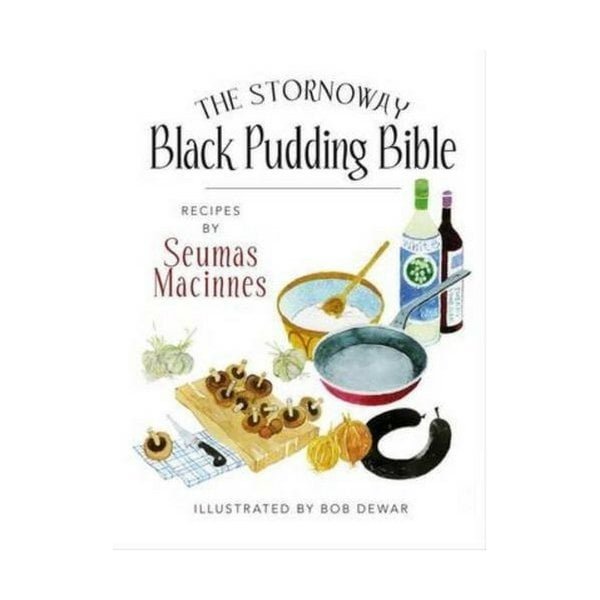The Origins of Black Pudding....
In today’s social media merry-go-round, adding a new recipe or reviewing the latest cooking techniques is more relevant than writing about the history of a type of food. Black Pudding (or Blood Sausage) has been on the table for centuries in numerous countries around the world. There are so many interesting historical, religious, and cultural references relating to this occasionally contentious food source that we thought we’d share some of them with you. So we are going to track back through the ages to find out more about the history and origins of ‘Black Pudding’ with some facts (& tales). By way of an introduction, we’ll start with a few of the reasonably well-known facts.
10 Historical Facts about Black Pudding
- The earliest mention in literature referencing the food type is in Book 18 of Homer’s Odyssey, around 800 BC. [I]
“We’ve got these goat paunches on the fire, Stuffed with fat and blood, ready for Supper.”
- The oldest detailed recipe for Black Pudding is attributed to Apicius (a collection of Roman cookery recipes compiled in the late 4th or early 5th century AD), which uses lengths of intestine, rather than a stomach, as the container. The recipe is made with no cereal, but with chopped hard-boiled egg yolks, pine kernels, onions, and leeks. [I]
- In medieval times it was not unusual for even relatively poor families to own a pig, which was often slaughtered in the autumn. Making Black Puddings was therefore very common as they would let none of the animal go to waste. The pig’s blood was blended with minced onions and diced fat, spiced with ginger, cloves and a little pepper, and stuffed into lengths of intestine. [I / II]
- In 15th Century Britain puddings, rich with blood, fat and spices, became quite a delicacy, to be eaten on high days and holidays. Puddings, however, came to be associated with the idea of stuffing of any kind. The Pudding of Porpoise was a dish for the nobility: [II]
“Take the Blood of him, & the grease of him self, & Oatmeal, & Salt, & Pepper, & Ginger, & mix these together well, & then put this in the Gut of the porpoise, & then let it boil easily, & not hard, a good while; & then take him up, & broil him a little, & then serve forth.”[III]
- During the great Black Pudding controversies of the late seventeenth and early eighteenth centuries it was rumoured that Sir Isaac Newton, a theologian and one of the foremost scientific intellects of all time, abstained from Black Pudding and Rabbits (whose meat remained bloody because they were killed by strangulation) on account of the Old Testament prohibition against eating blood. After his death, Newton’s niece, Catherine Conduitt, defended his reputation, stating that this was a matter of ethics rather than taste. [IV]
- Historians believe the first Bury [England’s ‘home’ of] Black Pudding was made and sold at Casewell’s Pudding Shop on Union Street, Bury in 1810. The shop was just an ordinary terrace house displaying the Lancashire delicacy in its window and the puddings were made there until it was demolished in 1968. [VI]Source: M.E.N.
- “Marag Dubh” – the Scots Gaelic name for a Black Pudding was first made by Stornoway Crofters who had to ensure that every part of the small number of livestock they kept was utilised to the full. When it came to killing the animal crofters would share the task and, in a time of no refrigeration, the meat with neighbours who in turn would return the favour at a later date, thus ensuring a meat supply during the long winter. [V]
- In 2007, Stornoway Black Pudding, produced in Isle of Lewis in the Outer Hebrides of Scotland, was awarded Protected Geographical Indication (PGI) status, under the EU’s Protected Food Name (PFN) scheme, a status to give consumers the utmost guarantee that they are buying the genuine, premium product. [V]
- The Confrerie des Chevaliers du Goute Boudin or ‘Brotherhood of the Knights of the Black Pudding‘ as it is known in France, is one of many fraternities in the country that are devoted to celebrating a specific ingredient. Since it’s inaugural event back in 1963, the annual Black Pudding competition at Mortagne au Perche in the Orne, France, invites pudding producers from all over the world to submit their latest sausage creations to judge the best!
- The annual World Black Pudding Throwing Championships are held in Ramsbottom, Greater Manchester. The contestants throw Black Puddings at a 20ft (6m) platform holding Yorkshire puddings with the aim of knocking off as many of them as possible from it. The story behind the contest is based on an incident during the Wars of the Roses in the 1400s, when the armies for the Royal Houses of Lancaster and York ran out of ammunition and threw food at each other. [VI]Source: M.E.N.
Credit & Reference Sources:
- The Oxford Companion to Food by Alan Davidson
- Food and Drink in Britain: From the Stone Age to the 19th Century by C. Anne Wilson
- Harleian MS 279, 15th Century England | Source:godecookery.com
- Bonhams Auction House
- Department of Environment | Protected food name scheme: UK registered products
- Manchester Evening News [M.E.N.] Online
BlackPudding.Club is a participant in the Amazon Services LLC Associates Program, an affiliate advertising program designed to provide a means for sites to earn a small commission by advertising and linking to amazon.com, amazon.co.uk, amazon.fr, amazon.it, amazon.es or amazon.de.
